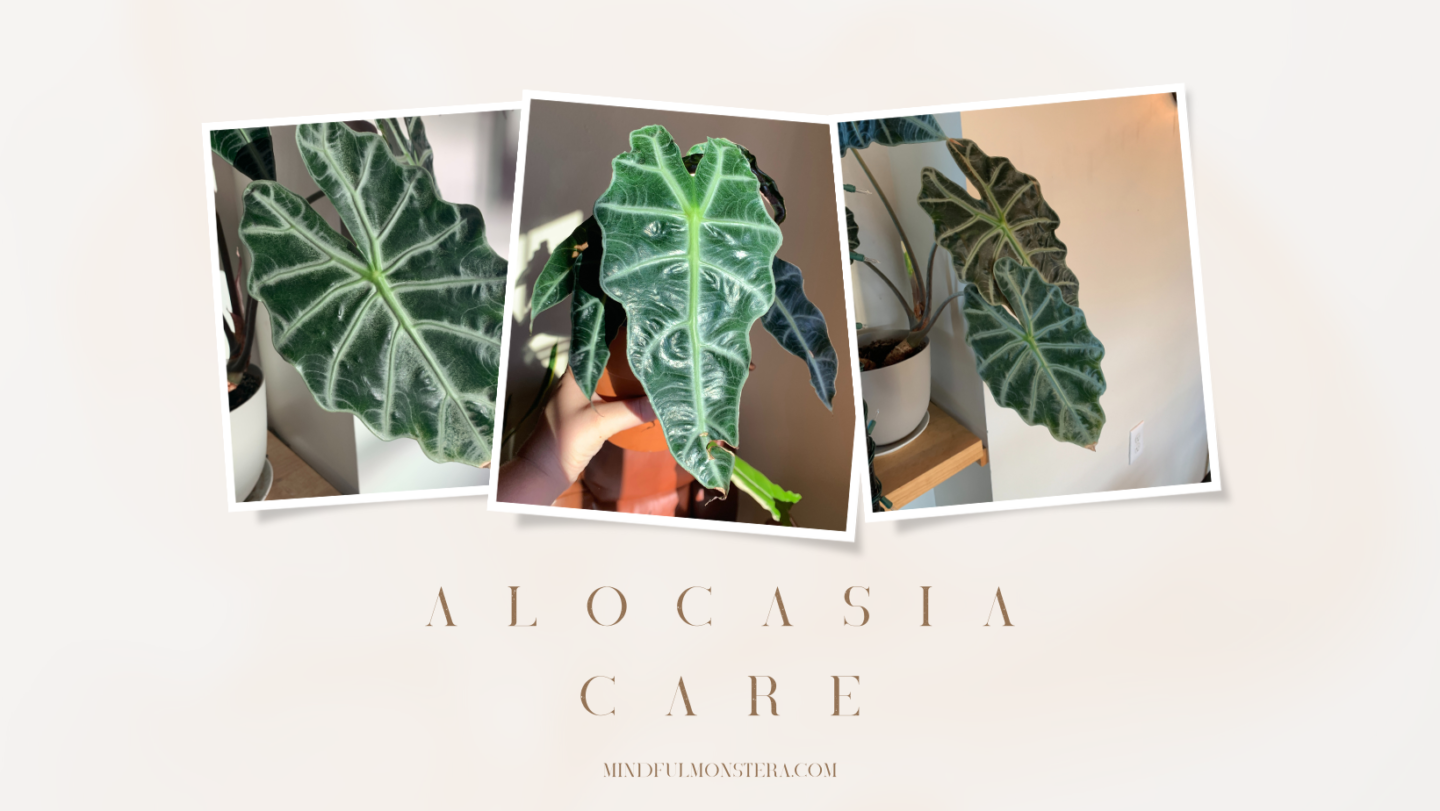
Follow for more!
Hi hello! Welcome to Mindful Monstera. I’m Sarah, the author and creator of this blog. I’m glad to have you here. I have always loved the elephant ear houseplant. It is a true beauty isn’t it? Honestly, a statement house piece I might add. I’m going to be dropping all the secrets and knowledge that I have learned about this plant since I’ve owned one. I don’t believe this is a good plant for a beginner houseplant owner. I have found the plant to be quite sensitive. Anyways, let’s learn the secrets of the Elephant Ear houseplant.
Overview of Elephant Ear Houseplant (Alocasia Plant)
The Elephant Ear plant is common name for the Alocasia. The Alocasia plant genus originates from from subtropical/tropical regions of Asia such as parts of India, China, South East Asia, Indonesia, Malaysia, and parts of Australia. These plants live under tree canopies (hint hint). There are many different varieties of these plants, around 70 different Alocasia species exist! These plants are rhizomatous or tuberous plants. In botany, rhizomatous plants are also know as creeping rootstalk plants. The rhizomatous plants are capable of growing roots horizontally. These roots often store the plants energy. Some well-know plants that have rhizomes are ginger and turmeric.
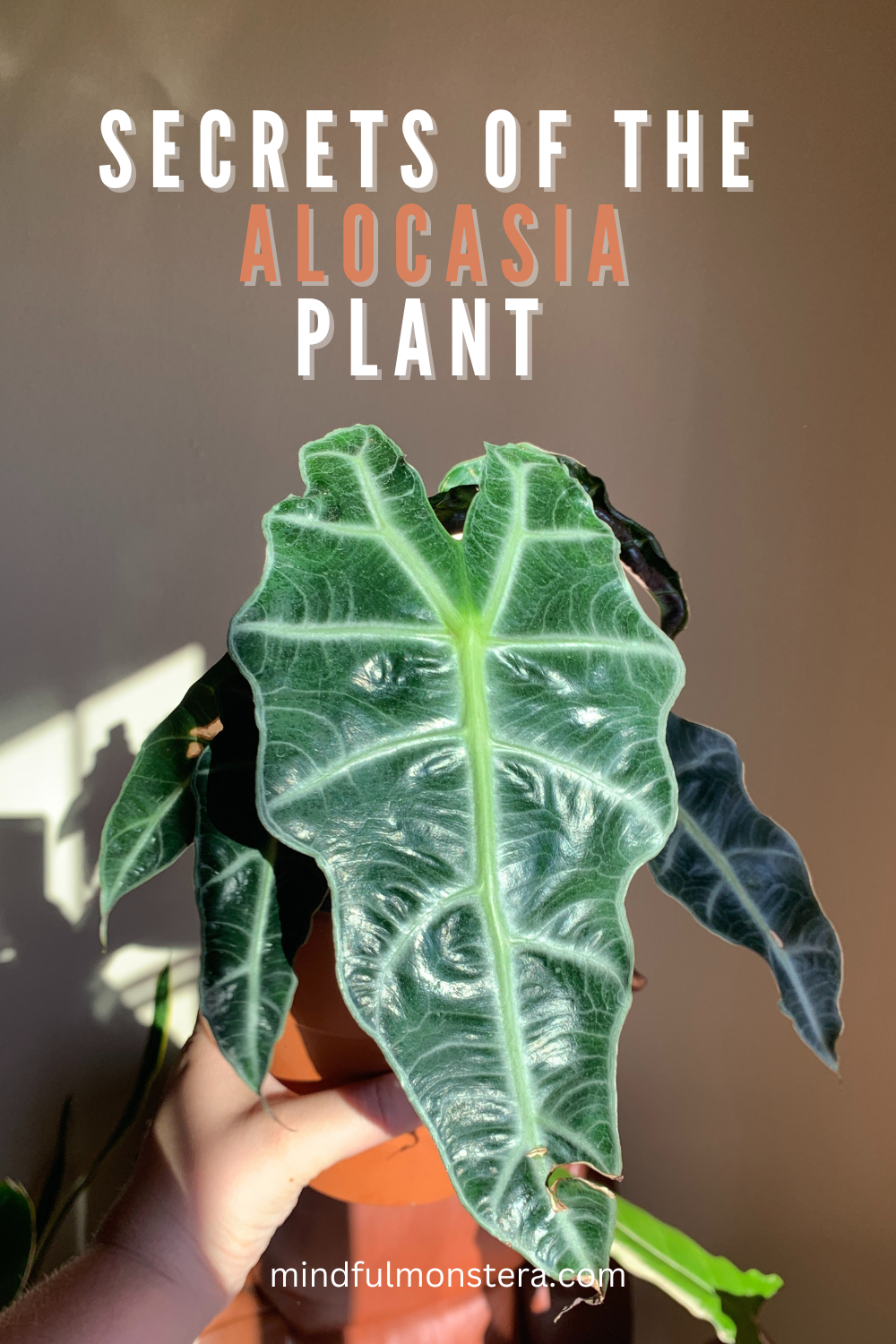
Water requirements for Elephant Ear Houseplant
The Elephant Ear Houseplant likes the be kept in a moist environment. Keeping the soil slightly wet is a good idea. Don’t over do it as we don’t want the soil to be soaking wet! I did that in the beginning and quickly learned that’s not okay. Having the right soil mixture will help you achieve the perfect moisture balance for your plant. I try to water weekly.
Soil Requirements for Elephant Ear Houseplant
In the alocasia natural habitat, these plants don’t grow in dense soil like we have most of our houseplants in. As I stated in water requirement section, Alocasias prefer a damp environment to live in. Here’s how you can achieve this.
- If you use regular potting soil: mix in some sand to help the plant have better drainage system.
- Consider adding some peat moss and/or cactus soil mix to help your plant have better drainage.
The peat moss will help the soil stay damp but drain off any wanted excess water which is perfect for Alocasias. A cactus soil mixture will help drain off any excess water in your plants pot. Lasty, remember to choose a pot with a drainage hole!
Shop Me on Amazon
Temperature requirements for Elephant Ear Houseplant
For the Alocasia, the ideal temperature range is 65-85F (18C-30C). I keep my home around 65-72F (18C-22C). Keeping Alocasias away from drafty doors, vents, and windows is important. It will not appreciate sudden temperature changes! Anything below 50F (10C) can cause permanent damage to your plant.
Do Alocasia Cry? Water Droplets on my Alocasia?
Some plants go through a process of guttation. Guttation is the process where a plant releases excess water. The release of the excess water does not cause injury to the plant. It’s important to remember if you see water droplets on your plant it’s not something to worry about. Guttation is a natural process your plant can go through. It’s just releasing excess water. If you keep having this issue cut back on waterings to solve the problem.
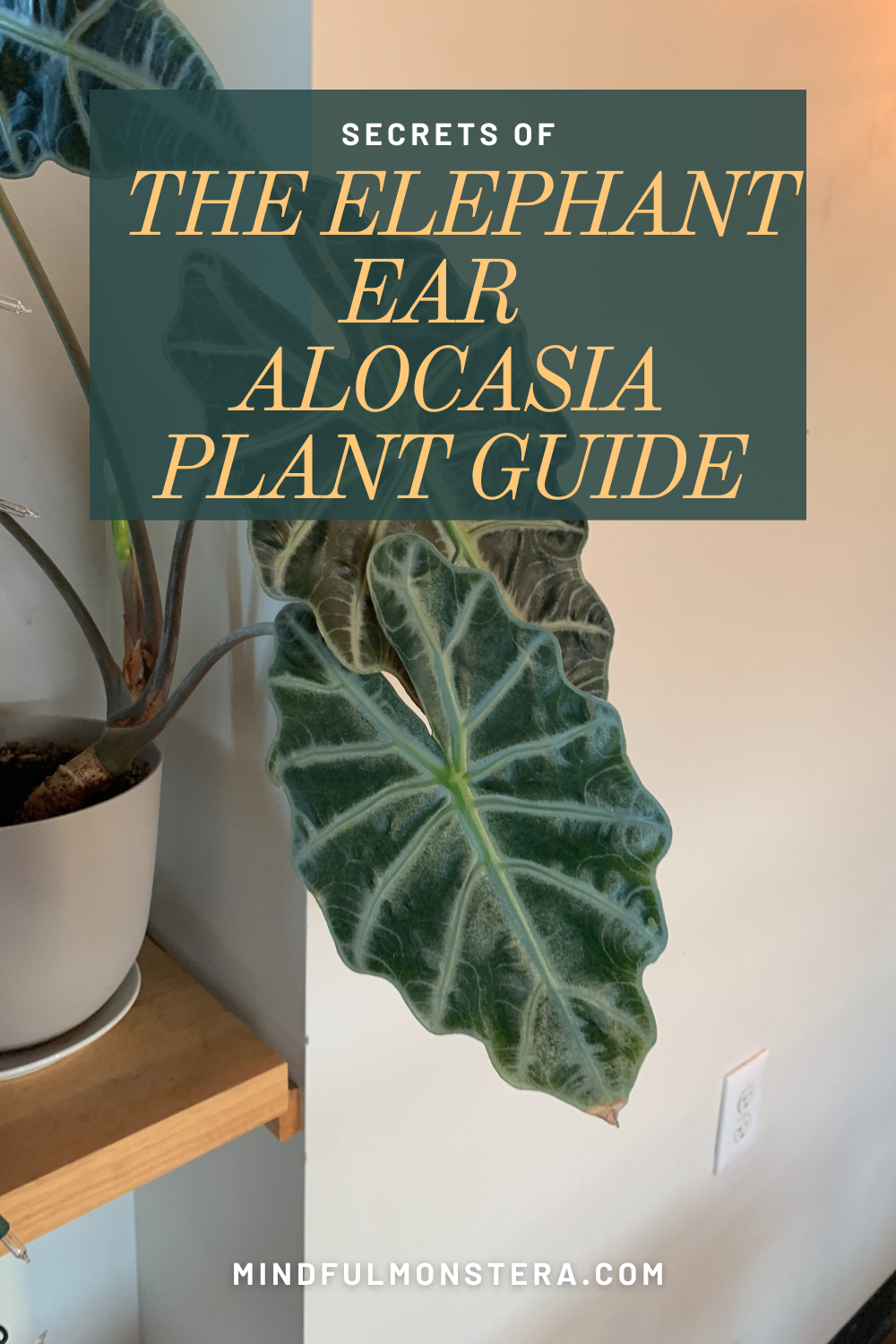
Alocasia Humidity Requirements
These plants originate from humid environments. That means they need humidity. Shoot for a humidity over 50%. I believe the two best methods for creating a humid environment for these plants are:
- 1. invest in a humidifier!
- 2. place the plant on the vanity in the bathroom when you shower.
I have linked a good humidifier from amazon. Humidifiers will offer a constant consistent level of humidity for your plants which can be key for overall health.
Shop Me on Amazon
Light Requirements for Elephant Ear Houseplant
These plants can grow in low light conditions. BUT bright indirect sunlight is best! Remember how I mentioned these plants grow naturally under tree canopies? So, that means it really isn’t ideal for these plants to be in low light environments or bright direct sunlight. If you start to notice any brown burnt spots on the leaves you should move your plant to a less sunny location. My Alocasia got burnt leaves because it had too much direct sunlight. I moved it an area with bright indirect light and it’s been much happier.
Alocasia Acidity
Alocasias plants prefer to be in acidic environments, ideally 5.5-6.5pH. Adding peat moss to your plants soil mixture can help put your plant in an acidic environment. If you’re interested in testing your soil pH you buy pH soil testing kits off of Amazon.
Shop Me on Amazon
Fertilizer Methods for the Alocasia
I have two ways I fertilize my Alocasia. The first is the indoor plant food by miracle gro. I know not everyone is a fan of this product, but I use it anyways. For this method diluted one pump into 16 fluid ounces of water and mixed it. I then water my plant with 8 fluid ounces and give the other 8 fluid ounces to another plant. Do this every 4 weeks in the months from April to August. I do not fertilize during the winter months. You can also consider using a 20-20-20 fertilizer. A 20-20-20 fertilizer means 20% nitrogen, 20% phosphorus and 20% potassium. This is also known as n-p-k fertilizer.
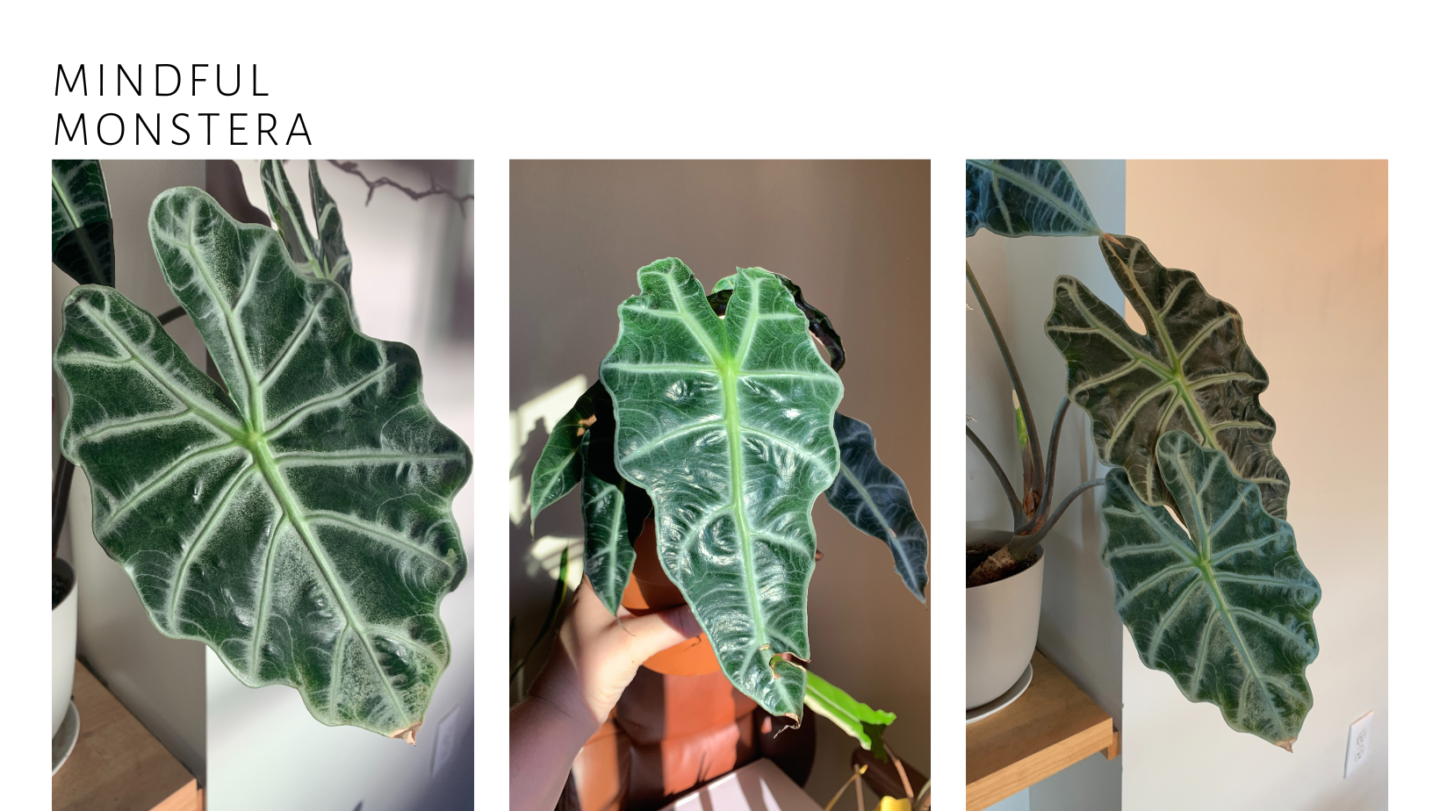
My second method for fertilizing my plant is adding worm castings to my plants soil. I have been adding worm castings to all my plants for about 3 years now and they love it! I add worm castings once a year in the summer months. Worm castings are a great way to add organic matter back into the soil. It’s a great way to care for the Alocasia and your other plants.
Shop Me
on Amazon
Falling leaves on the Elephant Ear
If the leaves are falling on your elephant ear plant it could be a few different culprits. You might need to adjust the light. Consider how much water the plant is getting. Do you need to cut back? Or are you not watering it enough? Does the plant need to be fertilized? Consider adding a fertilizer or trying a new fertilizer.
Alocasia Dormancy
Dormancy in plants is a normal natural process and it’s nothing to worry about. Alocasia usually go dormant in the winter months when temperature drops, humidity drops, and sunlight drops.
- Sunlight: If you want to combat dormancy in your Alocasia make sure your plant is receiving appropriate amount of sunlight. If you can’t achieve this in your home you can invest in plant grow lights.
- Humidity: For humidity consider investing in a humidifier.
- Temperature: As for the temperature make sure your plant is away from any drafty windows and you aren’t letting your home get too cold.
Shop Me
If your plant does go dormant be sure not to over water it as its metabolism is slowing down. It won’t need to be watered as often. During alocasia dormancy, your plant might drop all of its leaves. If this happens it doesn’t mean your plant is dying. It could just be in the dormant phase and will grow new leaves in the coming months.
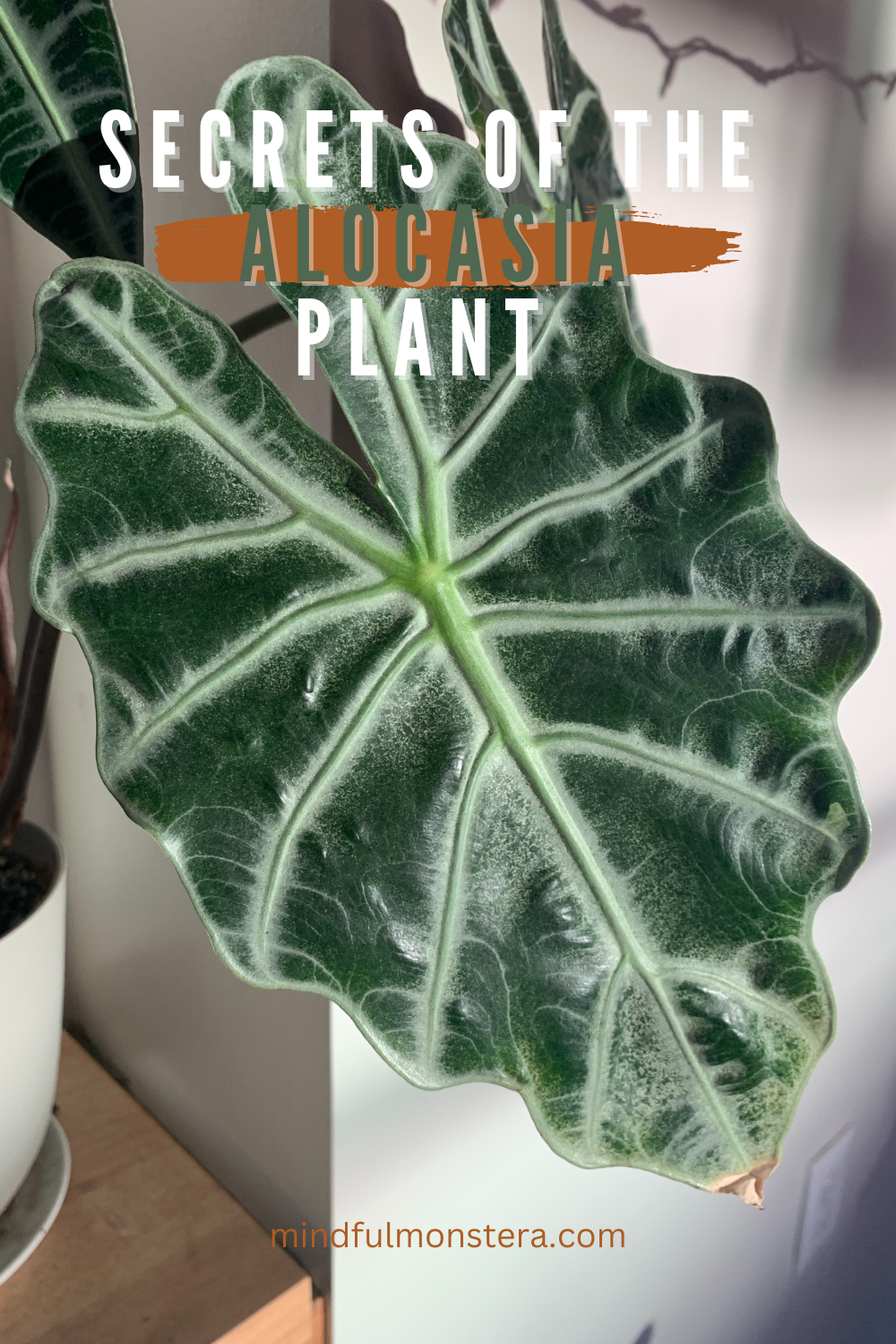
Do Elephant Ear Houseplants Purify the Air?
I’ve referenced nasa plant study in almost all the plant articles I’ve written and I will mention it again. According to the nasa plant study, the elephant ear houseplant filters formaldehyde out from the air around us. If you live in an environment where you’re subjected to a lot of air population consider investing in an air purifier for your home. Even though houseplants filter the air we might not have enough plants in our home to properly filter the air.
Shop Me on Amazon
Are Elephant Ear Houseplants (Alocasia) Plants Toxic?
The Alocasia plant is toxic and should not be eaten under any circumstance by pets including cats and dogs. Humans should not consume this plant either. Poison control has a good article if you are interested in learning more about the safety of Alocasia plants.
Other Tips
- Remember to frequently inspect all plants for pests every once in awhile.
- I don’t like dust collecting on my plant leaves, so i’ll take a wet washcloth and wipe down my leaves every once in awhile.
- If you want to make your leaves shiny consider investing in a leaf shine product. I have linked the leaf shine product I use.
Shop Me on Amazon
Where to Find the Alocasia
You can find these plants at most plant shops. I have seen them in Lowes as well. I bought mine at a greenhouse for $10 and$17.
Don’ts of the Alocasia
- don’t let the plant get super dry
- don’t forget to fertilize every once in awhile
- don’t place near draft areas
- don’t let the soil get soaking wet
Other Content
If you’re interested check out the rest of my blog. I have a recipe page and a lifestyle page that you can check out!
